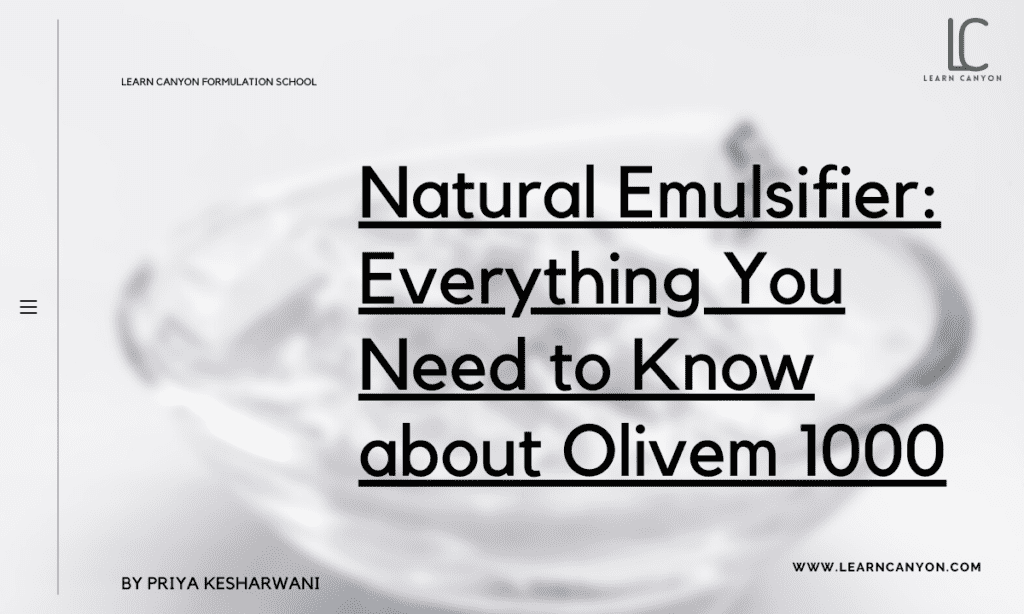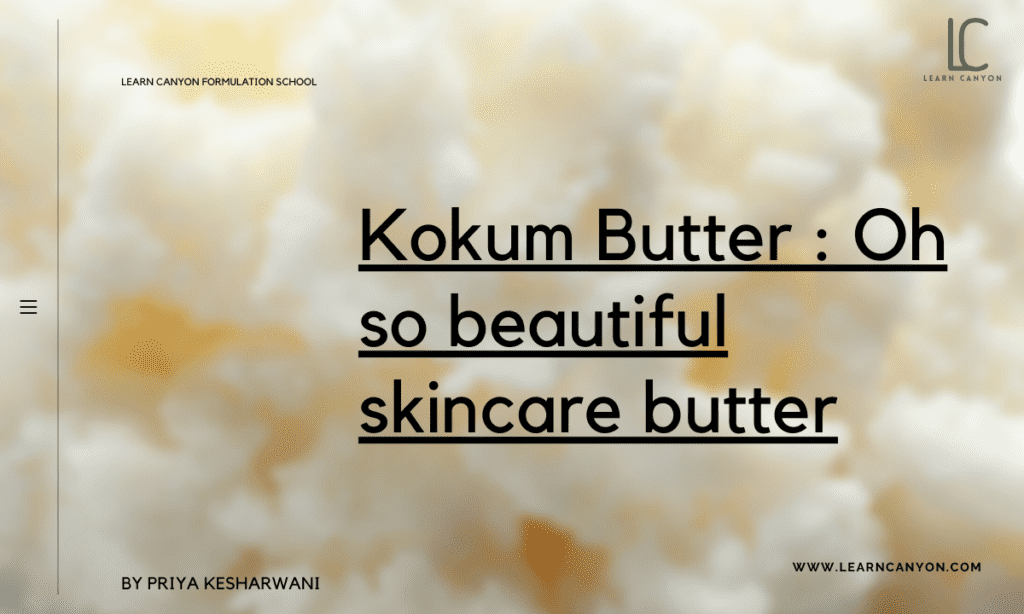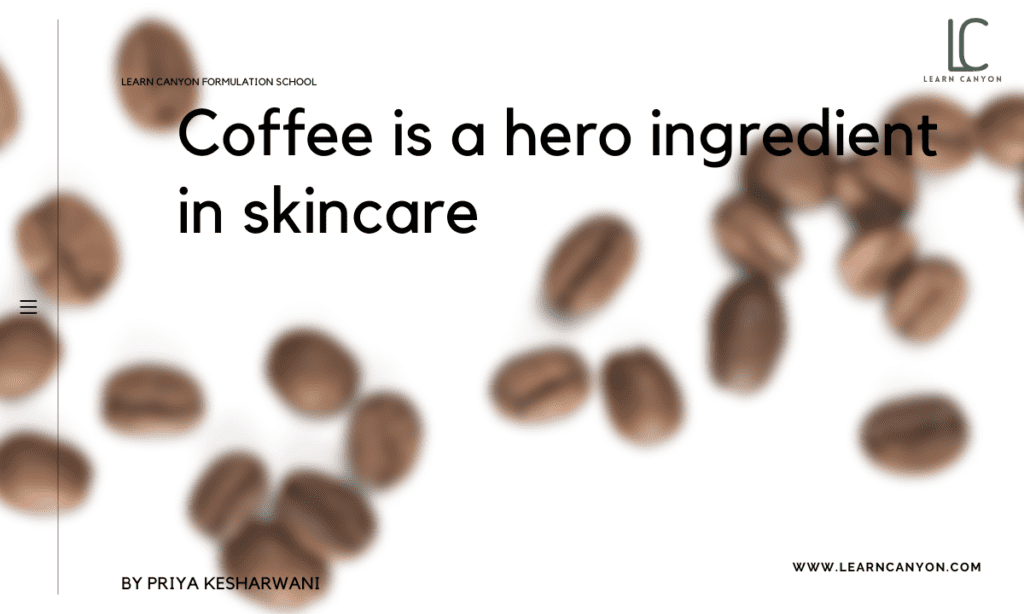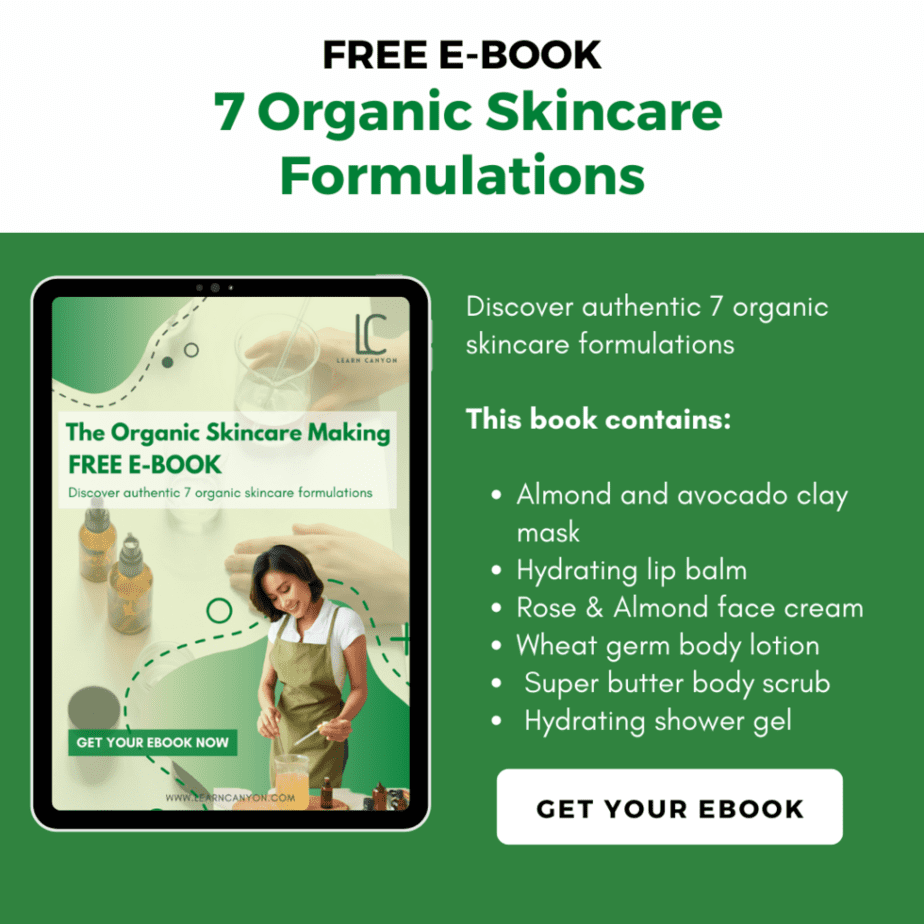
Kokum Butter: Solid off-white butter

Kokum Butter
Natural skincare is getting a lot of popularity these days, which is fantastic. Coconut oil, cocoa butter, shea butter, and mango butter all have health benefits that you don’t have to be a health freak to know about.
On the other hand, what about kokum butter? We’re guessing you’ve never heard of it.
Kokum butter is an Indian butter prepared from the fruit of the Garcinia tree. It has long been used in India’s holistic health communities.
It’s one of the most consistent and challenging vegetable butter on the market. It’s an excellent addition to your skincare routine. One of our favourites is kokum butter, which we use all year!
What is Kokum Butter?
The fruit kernels of the kokum tree are used to make kokum butter and oil. This fruit-bearing tree is found in India’s Western Ghats region and is also known by its scientific name, garcinia indica.
It belongs to the Guttiferaw tree family and is also known as the wild mangosteen or red mangosteen tree.
At first appearance, kokum butter seems unusual. It’s flaky and has a soda ash-like appearance. Kokum butter is light grey or pale yellow in colour and contains a lot of saturated fat called stearic acid.
Because of its chemical makeup, kokum butter solidifies at room temperature. This is why butter is used instead of oil. It is possible to eat kokum butter.
| What is it? | Kokum Butter is made from the fruit of the kokum (or "kokam") tree (Garcinia indica), which is native to India's central east. The fruit kernels are pressed into butter, which is then refined and processed to produce an off-white butter with a slight odour. |
|---|---|
| INCI | Garcinia Indica Seed Butter |
| Appearance | Butter Solid off-white butter |
| Texture | Very solid—firmer |
| Recommended Usage | 5-100% |
| Solubility | Oil soluble (infusions) |
| Melting point | 100.5ºF |
| Boiling point | NA |
| pH | 1.2-1.8 |
| Aroma | Mild odour |
| Why do we include it in formulations? | Kokum butter, when used in large volumes, can help harden/stabilise body butter bars, shampoo bars, and other solid products by forming the backbone of thick body butters. It makes a lovely non-greasy emollient at lesser amounts. |
| How to work with it? | Include it in your formulations' oil phase. |
| Applications | Antioxidant, Anti-Inflammatory, and Antibacterial qualities make it less likely to clog pores. |
| Absorption rate | Fast to average |
| Strength | Kokum butter is a lovely emollient with a non-greasy texture that thickens and hardens our products. |
| Weaknesses | It's a little more difficult to come by than butters like cocoa and shea. |
| Substitution | Cocoa butter or tucuma butter |
| How to store it? | Stored in a cool, dark and dry place. |
| Shelf life | The shelf life of kokum butter should be at least two years. |
Fun Fact
| Type of ingredient | Emollients |
|---|---|
| Main benefits | Kokum Butter is a therapeutic and deeply moisturising butter that stimulates skin regeneration. |
| Who should use it | All skin types |
| How often can you use it? | It is safe to use on a daily basis. Kokum butter has no comedogenic properties. |
| Works well with | The majority of other butter and oils. |
| Doesn't work with | - |
| How to use | Added to your compositions during the oil phase. |
Mechanisms of action
Kokum Butter is one of the most emollient butters, having therapeutic and extremely hydrating characteristics that encourage skin regeneration. It’s a fruit-bearing tree called the Kokum tree that produces the oil. Kokum Butter is a mild emollient that profoundly nourishes and softens dry skin, scalp, hair, and chapped lips by restoring moisture.
It dissolves into the skin and is quickly absorbed, leaving no greasy residue behind. Emollients are oily chemicals that act as occlusive agents, filling the gaps in the skin with fatty substances known as “lipids.” Emollients operate by covering the skin with an oily film that traps in moisture and keeps it there for longer.
The benefits of kokum butter
What would it be like if something simply melted as it came into contact with your skin? Well, kokum butter is one such ingredient that can accomplish this. The advantages of kokum butter are numerous. Kokum butter has a wide range of applications. As follows:
1. Moisturising property
Kokum butter is a great emollient for keeping your skin hydrated. It makes your skin silky and smooth by preventing it from drying out. Kokum butter is lighter and less oily than other natural butters, making it simpler to absorb into the skin. Kokum butter is beneficial to people with sensitive skin.
2. Rich in fatty acids
Kokum butter is packed with essential fatty acids. Essential fatty acids omega-3 and omega-6 improve the texture and appearance of your skin by helping to keep skin cells and tissues healthy. Kokum butter’s polyunsaturated fats nourish and moisturise your skin, providing a protective layer that keeps it plump and hydrated. Because of its high fatty acid content, kokum butter is used in a wide range of cosmetic and skincare products. As a result, the stability of your skincare formula will improve.
3. Regenerates the skin cells
Kokum butter not only regenerates but also prevents skin cells from degenerating. It has incredible healing capabilities that penetrate deep into the skin and absorb fast. The skin benefits of kokum butter aren’t just for cosmetic purposes. Ulcers and cracks in the feet, hands, and lips can also be treated with them. Kokum butter’s anti-inflammatory qualities can help with inflammation relief.
4. Gentle on sensitive skin
Your skin is a mirror of your overall wellness. A variety of skincare and cosmetic items can irritate or cause allergic reactions in sensitive skin. Sensitive skin responds well to products containing kokum butter. Because they don’t block pores, they don’t contribute to acne breakouts.
5. Natural moisturizer for dehydrated skin
A good moisturiser meets all of the criteria, is light on the skin, and absorbs quickly. Dry skin requires frequent moisturising, which kokum may provide. It moisturises the skin while being non-sticky and non-greasy.
6. Antioxidant properties through Vitamin E
In kokum, antioxidant properties abound. These properties keep the skin appearing fresh while also preventing it from absorbing contaminants from the environment. Vitamin E’s high amount boosts your immune system, enhances your skin’s look, and boosts cell activity.
7. Battles the signs of aging
Have you ever thought about why our skin wrinkles as we get older? Elastin, a crucial protein in the skin, breaks down over time as a result of exposure to the sun’s rays. As a result of UV exposure from the sun, our skin gets saggy and loose. Kokum butter is helpful in this situation. Its moisturising, antioxidative, and regenerative properties help to combat visible indications of ageing.
Side effects of Kokum butter
Kokum butter is a natural approach to keep your skin and hair soft. Avoid overheating the butter to prevent it from being ruined. Although there aren’t many risks to applying Kokum Butter topically, it’s always a good idea to do a patch test on a less sensitive part of skin to see how your skin reacts.
If your skin remains inflamed after 48 hours, you can use Kokum Butter products on your face.
How to use it in formulation?
Because of its nourishing, moisturising, regenerative, and therapeutic properties, kokum butter is commonly used in skincare products such creams, lotions, soaps, moisturisers, body butters, scrubs, and lip balms. The texture of kokum butter is solid, but it melts fast when it comes into contact with the skin. 90-104 degrees Fahrenheit is the melting point of kokum butter. It melts as soon as it makes contact with your skin. In most formulas, it’s introduced during the oil phase.
Work well with other ingredients
Kokum Butter is abundant in fatty acids and can be combined with other ingredients to thicken a composition. It’s also a firm butter that stays solid at room temperature, so it’s great for solid formulation like balms and lotion bars!





